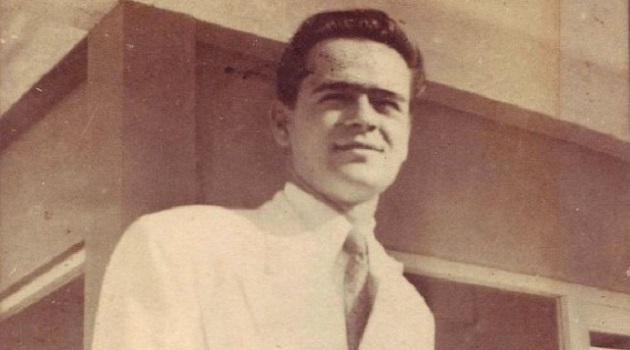 Guantánamo.- In the context of a turbulent Cuba, where hopes for justice were drowning in the murky waters of authoritarianism, a figure emerged whose life, though brief, was a fiery torrent of ideals and talents. Raúl Gómez García, known as the Poet of the Centennial Generation, stood out not only for his vibrant writing but also for his revolutionary fervor. His poem “Ya estamos en combate” (We Are Already in Combat) stands as a banner of struggle, a heartbreaking cry that resonates in the memory of people eager for change.
Guantánamo.- In the context of a turbulent Cuba, where hopes for justice were drowning in the murky waters of authoritarianism, a figure emerged whose life, though brief, was a fiery torrent of ideals and talents. Raúl Gómez García, known as the Poet of the Centennial Generation, stood out not only for his vibrant writing but also for his revolutionary fervor. His poem “Ya estamos en combate” (We Are Already in Combat) stands as a banner of struggle, a heartbreaking cry that resonates in the memory of people eager for change.
Raúl’s story began to take shape with mark left by the struggle since the military coup of March 10, 1952, shook the foundations of the nation.
In response to this usurpation of power, he wrote “Revolution without Youth,” a manifesto that exuded indignation and burned with the flame of social commitment. However, his words, as powerful as they were resonant, found the doors of the media closed to him, which feared the combative echo of his message.
It was then that, armed with a mimeograph and the determination that characterized his youth, he decided to print the newspaper “They Are the Same.” With the collaboration of Abel, Melba, and Jesús Montané, among others. They managed to circulate between 300 and 500 copies, bringing a message of resistance to the people.
By integrating his literary concerns with a deep sense of justice, Raúl not only became an educator but also allowed his poetry to resonate through verses inspired by José Martí. Despite being expelled from Baldor High School for his activism, he did not give in to adversity. On the contrary, his pen became a sword, cutting through the silence and indifference of that era where fear dictated the way. History would see him as a man who used words as weapons to fight injustice.
Fate led Raúl to meet Fidel Castro, who recognized in him a spark of courage and commitment. It was at Granjita Siboney, in the early hours of July 26, 1953, that his voice boomed powerfully. There, before leaving for the monumental assault on the Moncada Barracks, he read the Manifesto he had drafted on Fidel’s orders. Words filled with passion and dilemmas, suspended in the air like notes in a symphony of struggle, calling for a radical change in Cuba’s history.
In that instant, Martí’s ideals intertwined with his own vision of justice as he recited his poem, a hymn to dignity and resistance.
Assigned to take over the Saturnino Lora Civil Hospital, the young man, barely 25 years old, became both victim and protagonist of his own heroic tale. Already wounded, with the echoes of Hades resonating around him, he reached for a piece of paper and a pen, the message of which would be reduced to the essence of his being: “I was captured, your son.” That brief phrase, written amidst chaos and despair, encapsulated his humanity, his vulnerability, and the harsh reality of an unforgiving dictatorship. The bullets that took his life could not silence his message, which, like an echo in time, would resonate in the memories of those who longed for a different future.
Raúl Gómez García’s story did not end with his death; his legacy stands as a symbol of resistance. His body was presented as having fallen in combat, but the truth of his murder was revealed through those final lines that reached his mother, Virginia García. Each of those words was a lament and a denunciation, an irrefutable testimony to the crimes perpetrated under a tyranny that thrived on the pain of others. Those four words became a cry that still lingers in the collective memory: “I was put in jail, your son.”
Raúl was not only a poet, but a visionary whose voice rose against the injustice in the Cuban economic landscape of his time. The malice of his pen became a beacon in the darkness, illuminating the path for those who, like him, yearned for a free and just Cuba.
Thus, in Cuba’s historical memory, Raúl Gómez García is not remembered simply as a victim of tyranny, but as an emblem of the struggle for justice, a poet who knew how to transform words into action.
His voice echoed today among new generations, a constant reminder that art and social struggle can and should go side by side in the search for a future that honors those who gave their lives for a better country.
Por: Yisel Román Arcia